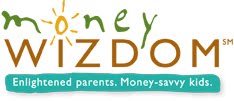Valentine’s Day, February
14th, is a fun day for both young and old! More than just a day for romantic
couples, it can be a day to celebrate friendship and kindness, and to show our appreciation for all who are dear to our
hearts.
Because young kids are
concrete thinkers, it can be hard for them to understand an abstract concept
like kindness that can't be represented by a physical object. However, by noticing
when people around them give to others, offer their help, or take actions that
make others feel comforted and loved, your kids can learn that "You are
kind" means so much more than three words inscribed on a Valentine’s candy
heart.
When to Do it
Valentine’s Day, or any quiet
afternoon
What to Do
Here are four kindness
activities you can try with your kids this Valentine’s Day — or any other time
during the year!
1.
Card Kindness
a. What would Valentine’s Day be without pretty cards?
Help your kids make cards of Kindness for those they appreciate in their lives.
b. Help them identify ways in which their friends or
family members have been kind. If
they have trouble coming up with examples, give them some hints. (Hint for
parents: take a little time in advance to recall some of these acts of kindness,
so you’re ready to jog your kids’ memories!)
c. Once they have some ideas, help them make cards
thanking these special people for the various acts of kindness.
d. Help them decorate with red paper, doilies, and
stickers, or glue on candy hearts.
e. You can suggest they also describe the kind act in
writing — people love knowing that their kindness was noticed and remembered.
2.
Special Gift Kindness
a. As your own budget allows, give your kids a special
gift budget to buy small Gifts of Kindness for a few of the kind people in
their lives.
b. Help your kids pick out items that mean something
special to each of the people they have chosen. Suggest they remember gifts
that they themselves have particularly enjoyed and treasured, and think about
why they feel that way.
c. If they have money left over, suggest they treat
themselves to a Gift of Kindness — or save the money for something more special
later!
3.
I Spied Kindness Box
a. Decorate an empty box with fun
heartfelt images. Close it and cut a slot in the top.
b. For a one-month period, ask you
kids to be on the lookout for acts of kindness.
c. Have them describe each kindness on
a sheet of paper (the youngest kids may need your help with this), and drop it
into the I Spied Kindness box.
d. At the end of the month, open the box
and spend time reading aloud all the acts of kindness.
e. Give your kids a Gift of Kindness
for all their hard work of noticing when people do kind things to others.
4.
Kindness Jar
a. Have your kids decorate a Kindness Jar to fill
with spare change that your family will collect for a month. (Kids will love to
watch the jar fill up day by day.)
b. At the end of the month, help your kids sort the
coins into coin roll wrappers and decide where they would like to donate the money.
c. Take them to the chosen charity and let them hand
over the contents of the Kindness Jar.
What you will need
Colored paper, doilies,
stickers
Candy hearts
Jar
Box (a shoe box or candy box
is a good size)
Scissors
Tape, glue
Talk
about it
Was it hard for your kids to find people who were kind?
How many people do they know who are kind? Did they find it fun to do the
activity you chose? Do they think they are kind? Are you? Are their siblings?
Why or why not?





